- 12 Ceremonies That Celebrate the Unity of Love in Indian Weddings
- The Untold Legends of Meenakshi Amman Temple
- The Silent Heart of Madurai’s Sacred Harmony
- St. Mary’s Cathedral Church, Madurai – History, Faith & Divine Darshan
- Discovering the Spirit of Halloween
- Monsoon Moods and the Magic of Food
- Temples in Kanchipuram
- World Mental Health Day
- Celebrating World Post Day
- Industries in Kakinada
- Madurai Meenakshi Temple and More
- Guide to Coringa Wildlife Sanctuary
- Sarees in Kanchipuram
- Embracing the Power of Shakti
- World Tourism Day
- National Chai Day
- Best Time to Visit Madurai
- Madras Day 2025
- Top Places of Interest in Madurai
- Top Madurai Tourist Attractions
- Best Places to See in Kodaikanal on Your Vacation
- The Glorious History of Thanjavur
- Bangalore to Wayanad Trip: A Complete Guide
- Places to Visit in Kakinada
- Must-visit Tourist Attractions in Thanjavur
- Kakinada Hotels near the Beach
- Bangalore to Kodaikanal Road Trip
- Best Tourist & Sightseeing Places to Visit in Vijayawada
- Best Kodaikanal 3-day Itinerary
- The Best Wayanad 3-day Itinerary
- 5 GReaT Reasons Why GreaT trails Yercaud is the Perfect Corporate Destination
- Places to Visit in Yercaud
- Fall into a delicious food coma in Wayanad
- The Anglo-Indian pop-up restaurant that transports you 70 years
- The GRT Group of Hotels Temple Tour: Regency Kancheepuram by GRT
- Addictions That Are Good For You
- What’s Coming in 2018?
- DIY Dum Biriyani Recipe
- DIY Super Bowls of Nutrition
- Where Food & Notifications Aren’t Friends
- DIY Paneer Makhmali
- Unusual and Interesting Ingredients in the GRT Kitchens
- Planning a vacation? Here’s why Wayand should be on your list
- Off the grid in Wayanad: 3 days in this magical hill station
- Work with a view, and then some!
- Tirunelveli in touch with yesterday
- A tasty tribute to thalaivar
- Are you monsoon ready?
- Check Out Our Amazing April Adventures
- The GReaT Summer experiences at Radisson Blu Resort Temple Bay, Mamallapuram
- 4-Step Guide To Planning An Event
- A slice of heaven in God’s own country
- Coimbatore Has New Kid Block
- Follow Us To The Lord’s Sacred Abodes
- Why You Should Book Direct With A Hotel
- A Step In The Right Direction
- GRT & SICA Go Gallivanting in Europe
- Bodhi Spa Wins World Luxury Spa Award
- Maintaining a safe haven for guests during the pandemic
- Shutterbugs Come To Mamallapuram
- Why Do You Travel? For A Bit Of Everything
- Planning The Perfect Wedding Menu
- NABH Certification for Bodhi Spa – Radisson Blu Hotel GRT Chennai
- Kenya Diary: Mumbai Transit
- Prepping For The Summer Holidays
- Defining Culture in Hotels
- Redefining thoughtful leadership: Our CEO’s approach to uncertain times
- The Cake Is Mixed
- The chronicles of our GReaT Warriors
- The Veteran Hoteliers at GRT Hotels & Resorts
- United For Tamil Nadu’s Tourism
- Adding relief to the relief efforts
- An Ode To Our Housekeeping Stars
- COVID-19: A Lesson in Humanity for Humanity
- FHRAI Awards Three of Our Team Members
- Going green for its silver year
- NABH Certification for Bodhi Spa at Radisson Blu Hotel GRT Chennai
- No Room To Waste Food
- A Brand New HQ for Brand New Ideas
- Wine and dine by the scintillating view of the ocean at Mamallapuram
- COVID’s impact on online marketing in the hospitality industry
- Lunch now comes with an express massage therapy at Radisson Blu by GRT Hotels
- Paradise unveiled at The Radisson Blu Resort Temple Bay by GRT Hotels, Mamallapuram
- Radisson Blu Resort Temple Bay, an oasis near Chennai
- Radisson Resort Pondicherry Bay, The perfect beach holiday
- The Grandeur of Grand by GRT, T. Nagar, Chennai
- Traversing the roads from Chennai to Kanchipuram with GRT Hotels
- A gourmet indulgence by the seaside, The Wharf 2.0, Radisson BLU Temple Bay, Mahabalipuram
- A summer getaway to the chilly mountains, GRT Great Trails, Kodaikanal
 CULTUREBLOG
CULTUREBLOG
12 Ceremonies That Celebrate the Unity of Love in Indian Weddings
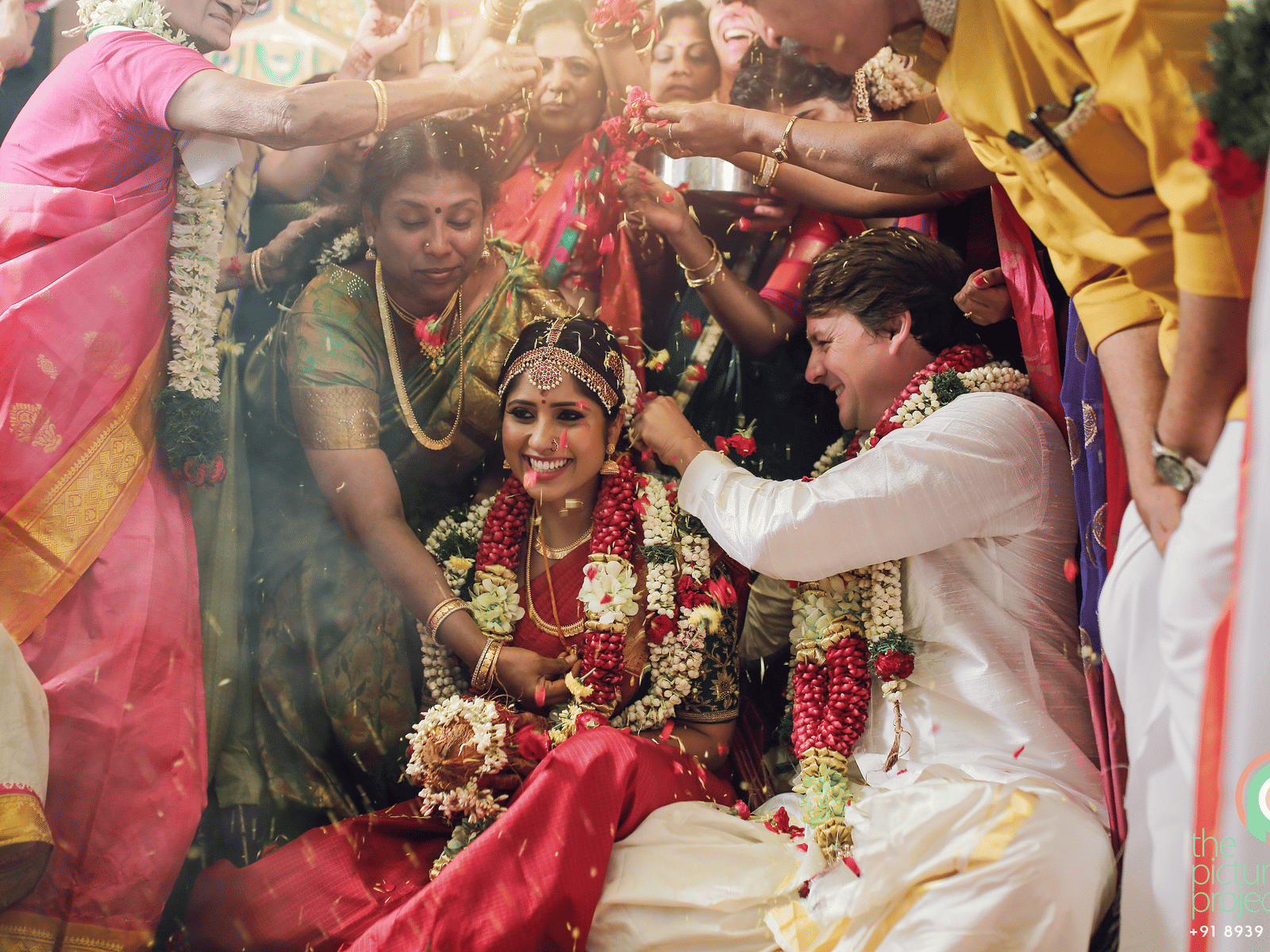
India is a land where every celebration carries colour, character, and emotion. A wedding is one such celebration that is grand, meaningful and holds cherishing memories. A wedding in India is more than an event; it is a beautifully layered journey that brings together rituals, families, memories and centuries of tradition. Every region of India has its own way of celebrating the unison of love. Though the customs and rituals are named differently, the emotions are the same. The two souls are being blessed, guided and celebrated by all those who love them.
Indian weddings reflect unity in diversity. While the names, rituals, and cultural nuances shift across states, the collective spirit of joy, devotion, and togetherness remains constant. Here are 12 iconic ceremonies that showcase India’s vast wedding heritage, each possessing its own cultural flavour, yet tied together by the shared heart of Indian tradition.
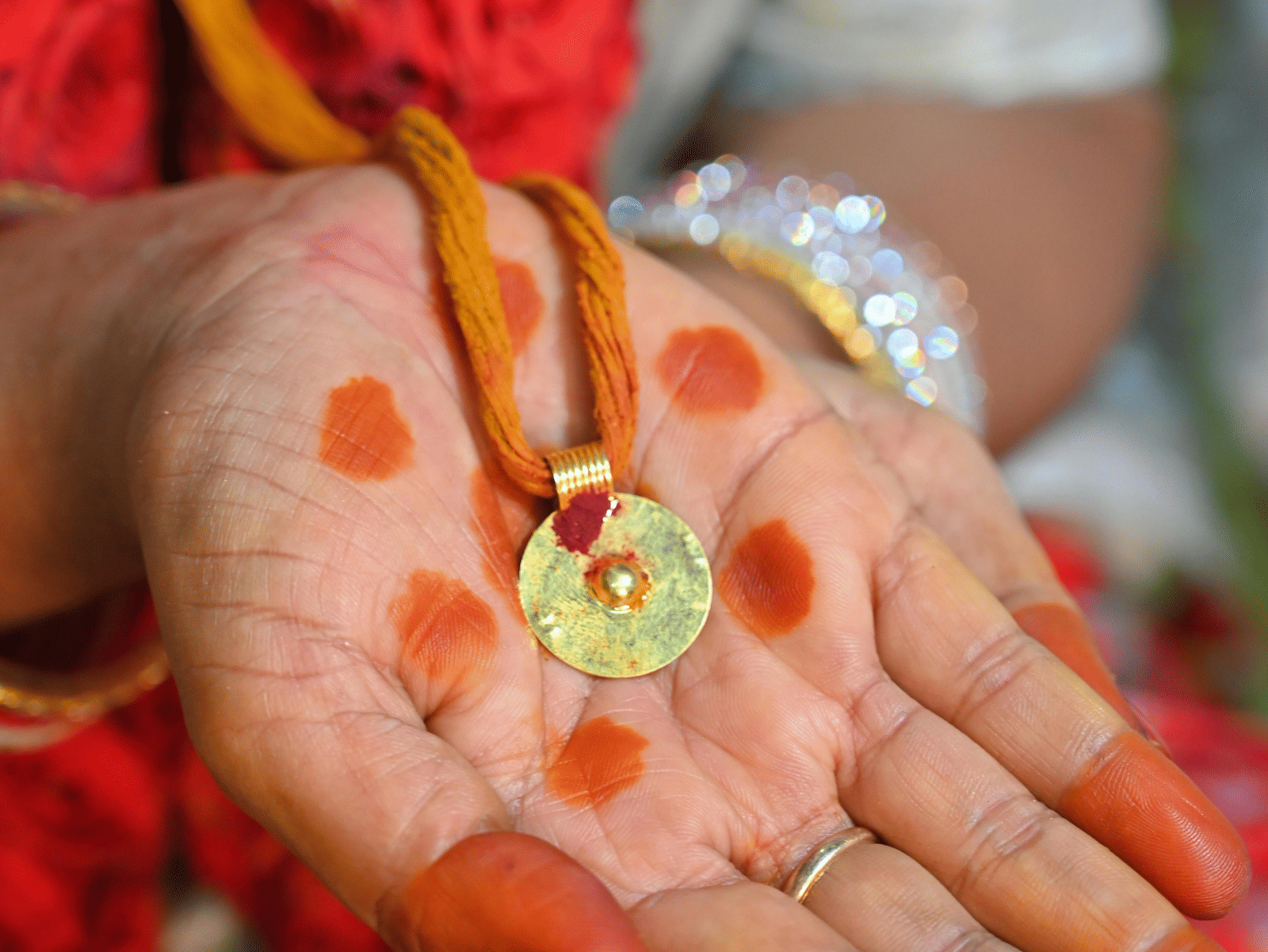
Mangalsutra
The Sacred Thread That Binds Two Hearts
Across the country, the Mangalsutra is known by many names: Thaali, Thaali Bottu, Minnu and Dejhoor. Though designs and customs vary, its meaning remains deeply rooted in love and commitment. This sacred thread symbolises the promise of togetherness. Whether it is adorned with black beads, gold discs, or cultural motifs, its emotional significance transcends regions.
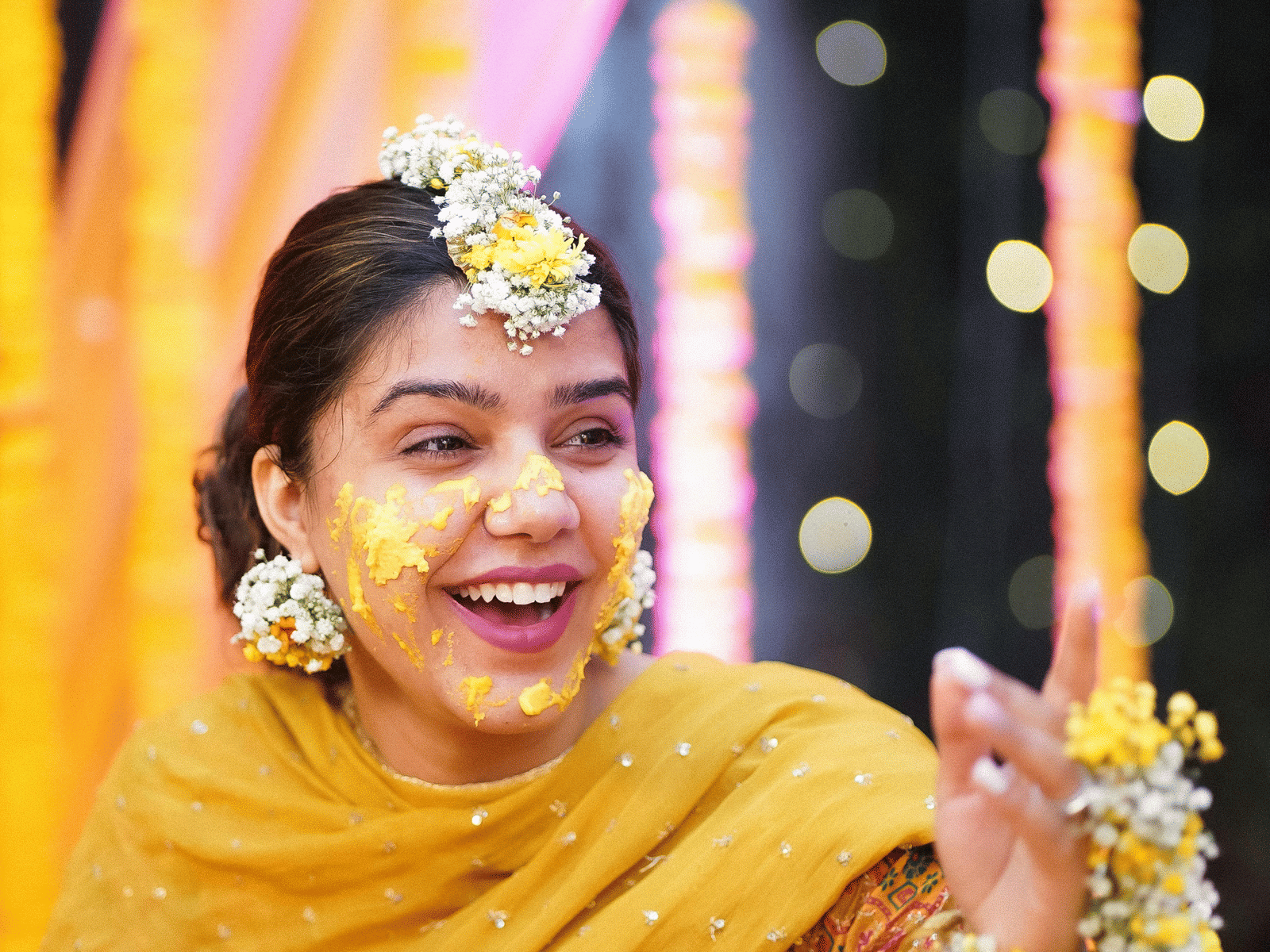
Haldi
Rituals of Radiance and Renewal
The Haldi ceremony is one of India’s most joyful and vibrant traditions. In different parts of India, it appears as Manja Kalyanam, Nalangu Mangala Snanam, Arishina Shastra, and Gaye Holud. Family members gently apply turmeric to the bride and groom, blessing them with good fortune, clarity, and a natural golden glow. The laughter, songs, and warmth of this ritual symbolize purity and positivity as the couple prepares for their big moment.
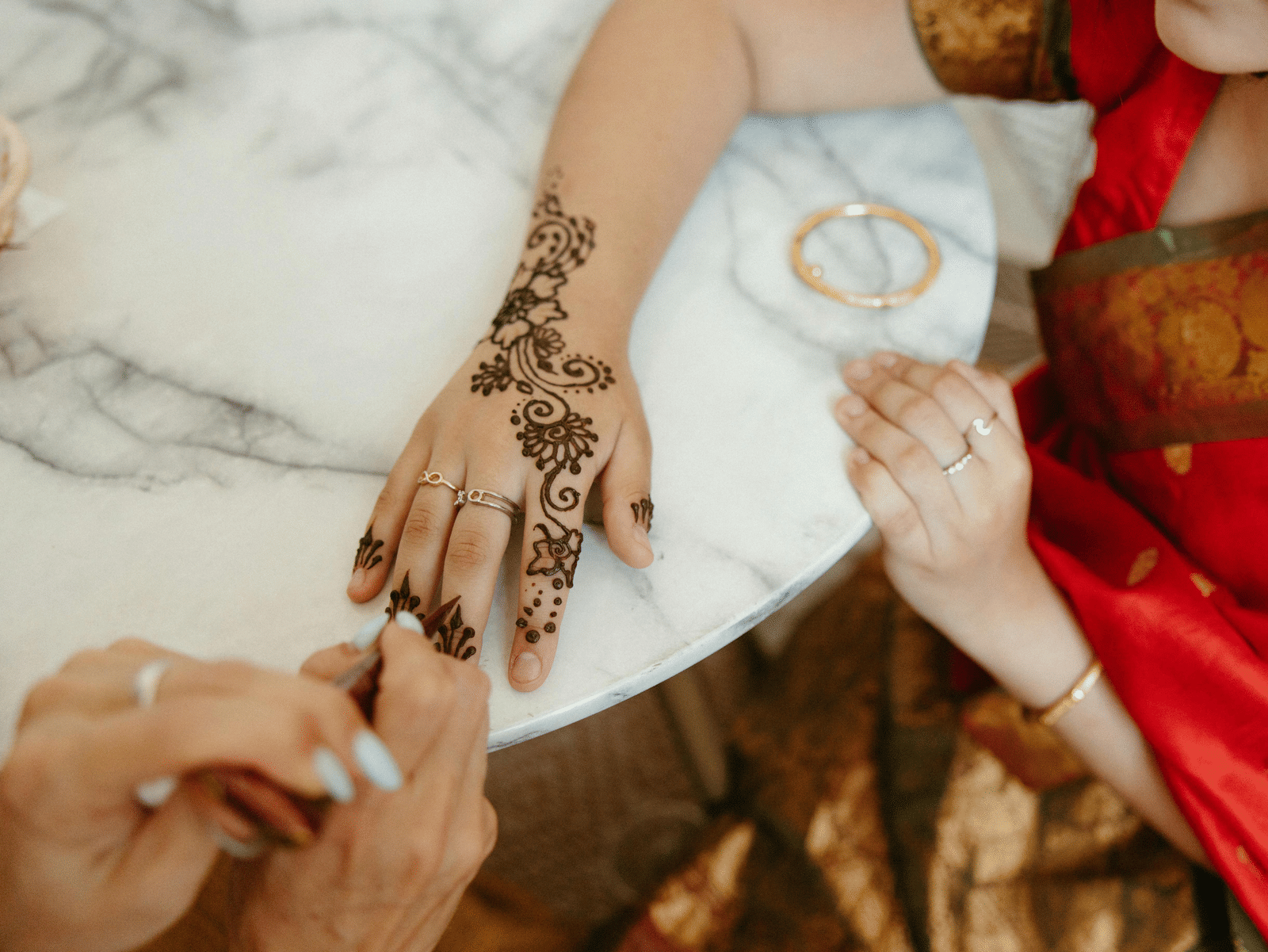
Mehendi
Stories Drawn in Henna
Whether called Mylanchi Kalyanam, Marudhani Sadangu, or Gorintaku, the Mehendi ceremony is a celebration of beauty, creativity, and tradition. Intricate patterns of henna adorn the bride’s hands and feet, each design symbolising happiness, prosperity, and the journey ahead.

Engagement
When Promises Take Shape
The engagement ceremony marks the official beginning of the couple’s lifelong journey. Known as Nichayathartham, Nischay Tambulam, Mangni, or Roka, this ceremony brings both families together as the rings are exchanged.
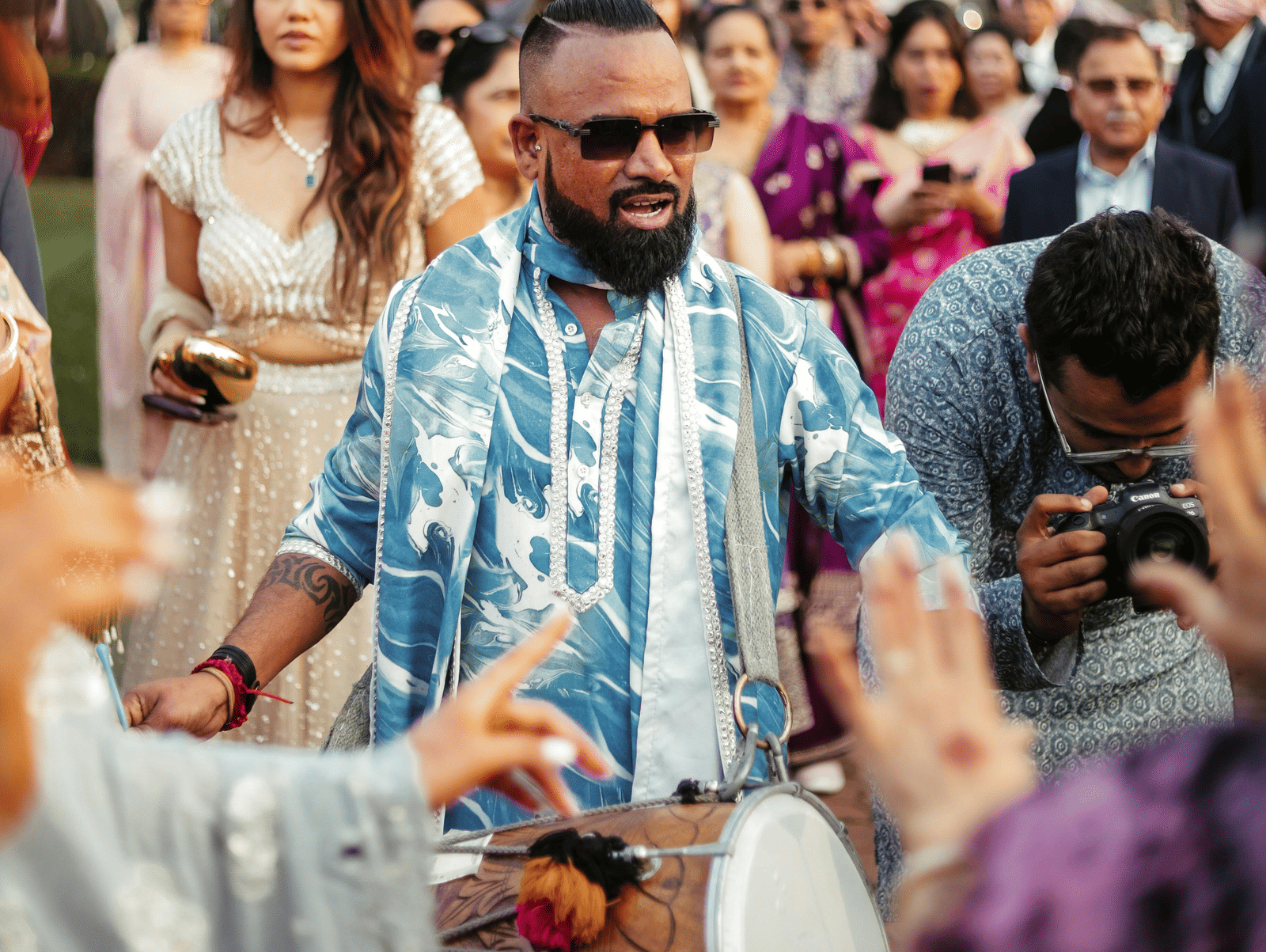
Sangeet
A Celebration Through Music and Movement
In communities where it is celebrated, the Sangeet—or Sanchak—is a night of dance, music and pure joy. It breaks the ice between families, strengthens bonds, and creates memories through performances, group dances, and shared laughter.

Baraat
The Groom’s Royal Procession
The Baraat transforms the groom’s arrival into a moment of grandeur and emotion. In the South, it is Mappillai Azhaipu, while in the East it is celebrated as Bor Boron. Whether he arrives on a horse, in a decorated car, or accompanied by drums and dancing, this moment symbolizes respect, excitement, and the joyous uniting of two families.
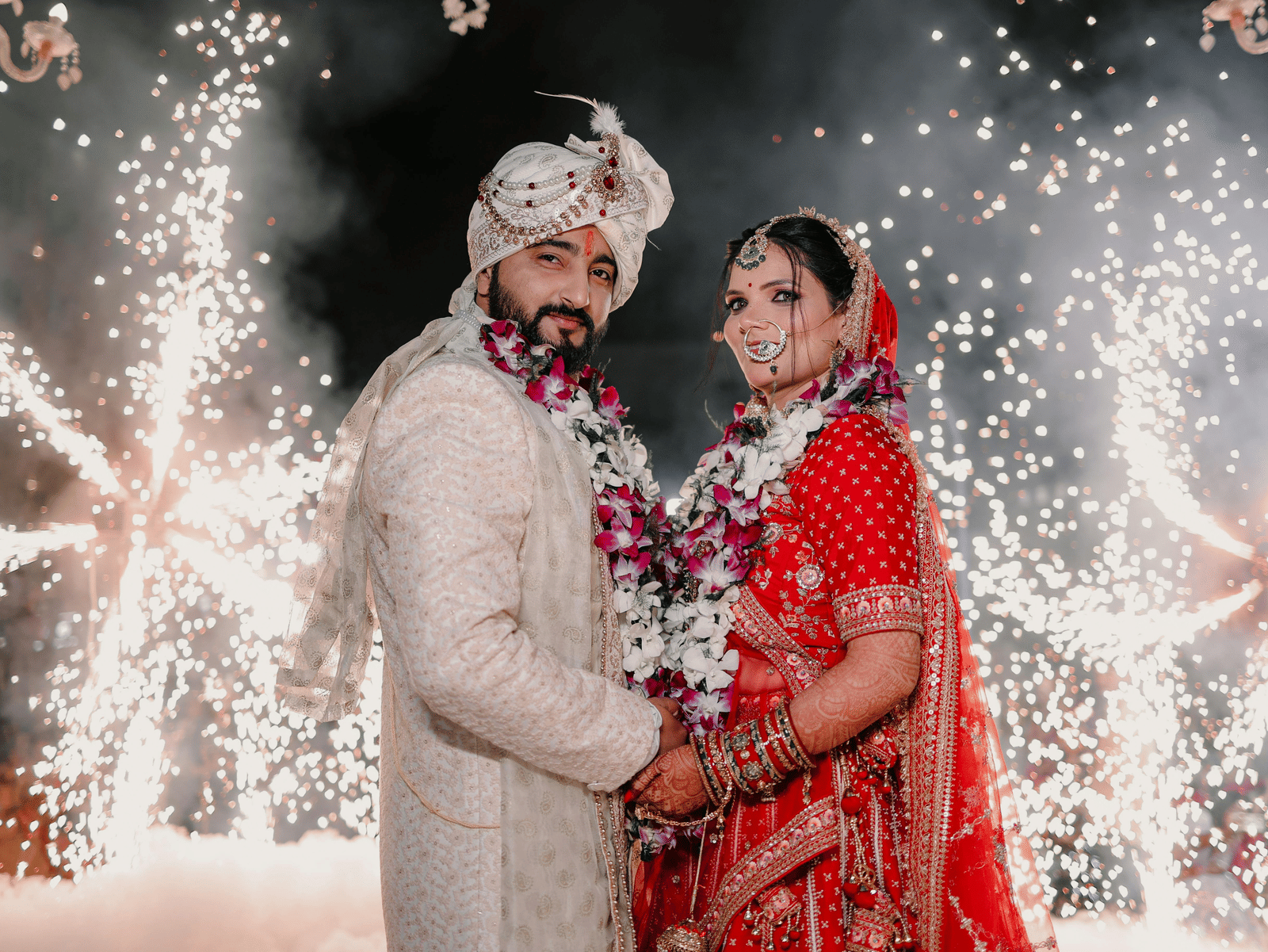
Varmala
A Circle of Acceptance and Affection
The exchange of garlands, called Varmala, Jaimala, Maalai Maatrudhal, or Mala Bodol, is one of the most symbolic moments of the wedding day. It signifies mutual respect, acceptance, and the willingness to embark on life together. Often accompanied by cheering families, it becomes a moment of laughter, beauty, and heartfelt emotion.

Giving Away the Bride
A Father’s Deepest Blessing
Emotionally rich and culturally special, this ceremony is known as Kanyadhanam, Samprodaan, or Dhareherdu. It signifies the father’s blessing and heartfelt offering of his daughter to the groom.
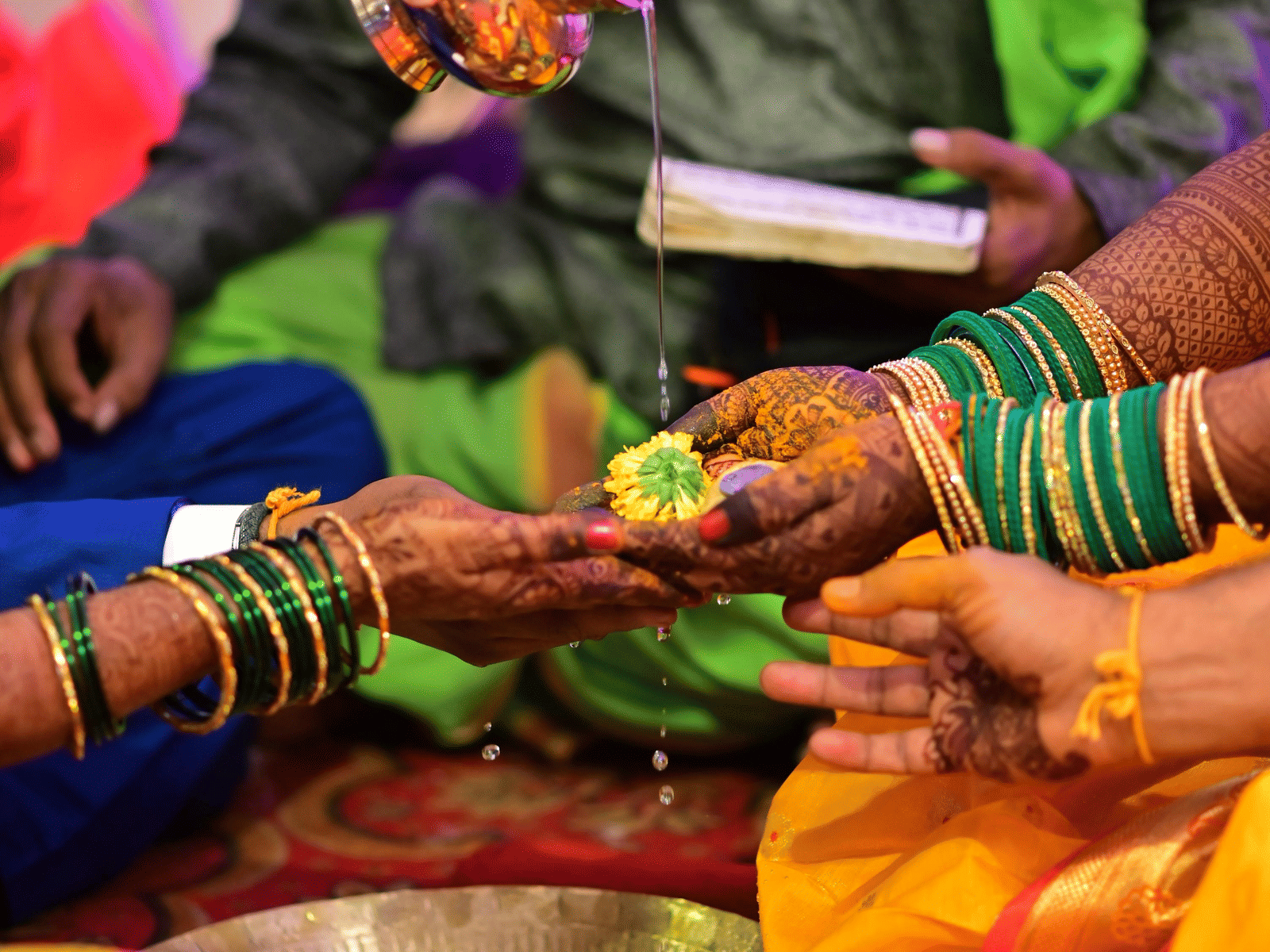
Ashirwad
Blessings That Light the Path Forward
Nothing is more sacred than the blessings of elders. The Ashirwad ceremony, also called Anugraham, Ashirbaad, Barakat, or Ashirvadham brings together elders from both families to shower the couple with wishes for a life full of grace, prosperity, and harmony.
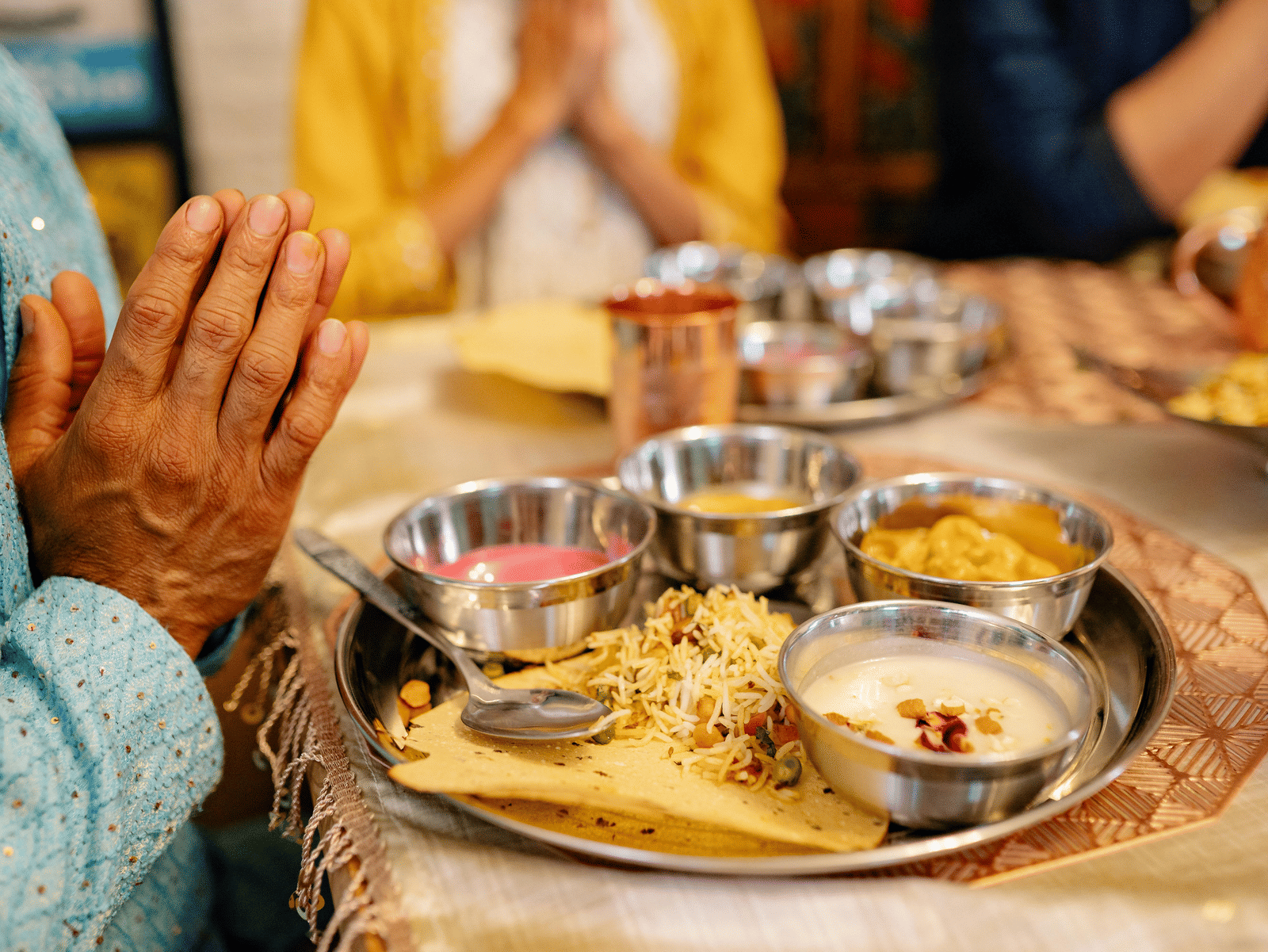
Marriage Feast
Where Food Becomes Celebration
Across India, the wedding feast is not just a meal; it is a cultural experience. Known as Kalyana Virundhu, Sadhya, Pelli Bhojanam and Maduve Habba, these meals reflect tradition, abundance, community and strengthens bonds.

Bidhaai
A Farewell Carried on Love
The Bidhaai or Rukhsati, Vazhianupudhal and Bidai marks a deeply emotional moment. As the bride steps into her new home, she carries blessings, memories, and love, marking a gentle transition filled with hope and warmth.
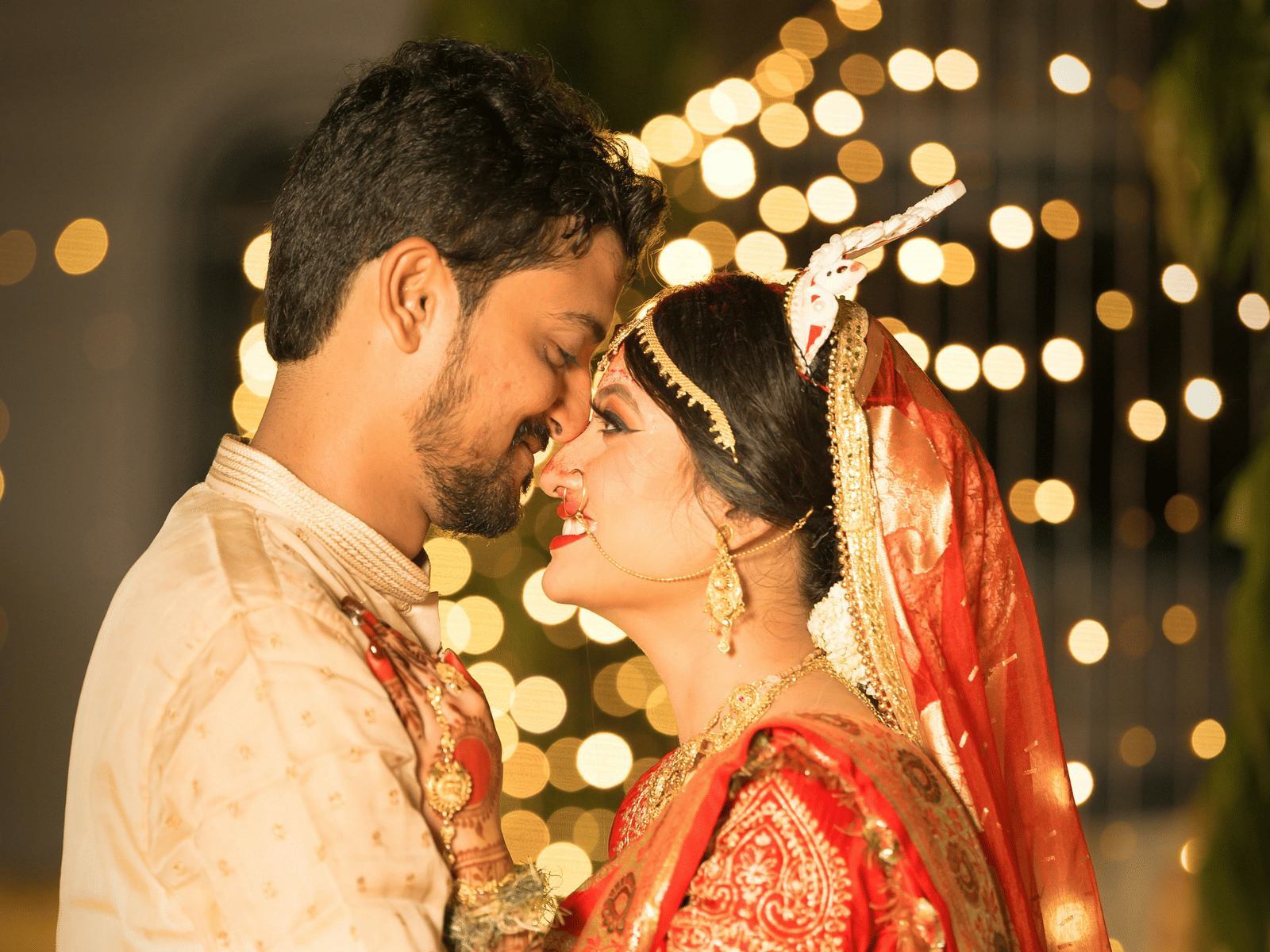
Reception
Two Families Becoming One
The wedding journey often concludes with the reception. Called as Walima, Thirumana Varaverpu, Virunnu, or Svagata Samarambha across regions, this grand celebration brings families together to honour the newlyweds with joy, music, feasting, and laughter.
Across India’s varied landscapes and diverse cultures, weddings shine with distinct traditions, but their essence remains beautifully united. In every ceremony, in every blessing, and in every shared moment, India celebrates the timeless truth that love is universal, and marriage or Kalyanam is a bond that transcends boundaries.